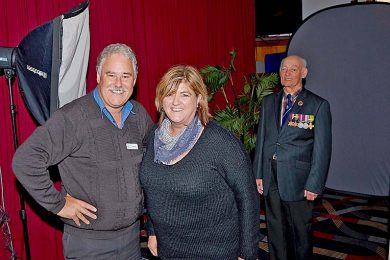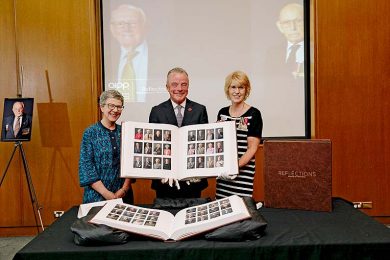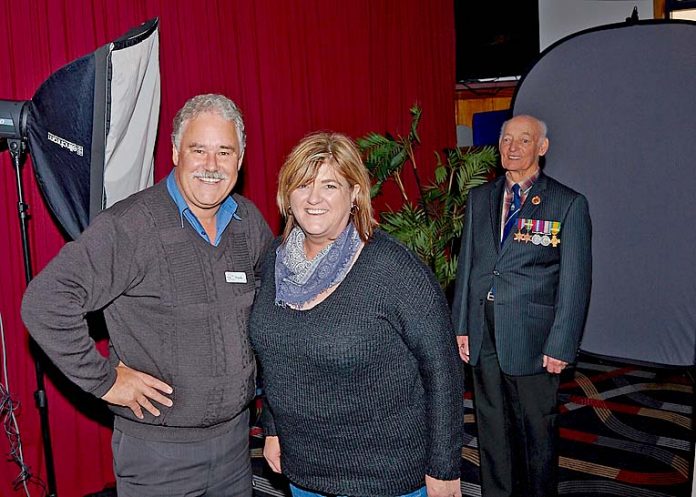
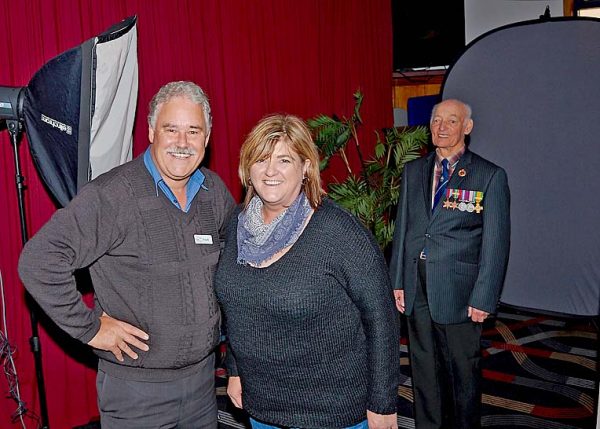
TRAVELLING across the South East to memorialise the faces of World War II veterans was an honour for Mount Gambier photographer Frank Monger.
In a project launched in 2015 by the Australian Institute of Professional Photography (AIPP), over 6500 World War II veterans nationwide were photographed to create a pictorial record for the Australian War Memorial archives.
Mr Monger, Furner photographer Jacqui Bateman and Tintinara’s Deanna Dunbar were among almost 400 photographers to work on the Reflections project, with the trio covering around 1500km.
In a coup for the project – and in conjunction with Legacy Week – AIPP has this week donated $10,000 to both the Returned and Services League of Australia and Legacy Australia.
Mr Monger estimated the trio photographed around 250 veterans across the district.
“In the beginning I was not interested in the project until both Jacqui and Deanna reached out to me,” he said.
“They roped me in and it began to blossom from there.
“I had no close family ties to war but now I do have a keen interest in researching more on battle history and the significance behind honourable medals.”
Mr Monger said the project involved tracking down veterans across the broader Limestone Coast and Western Victoria.
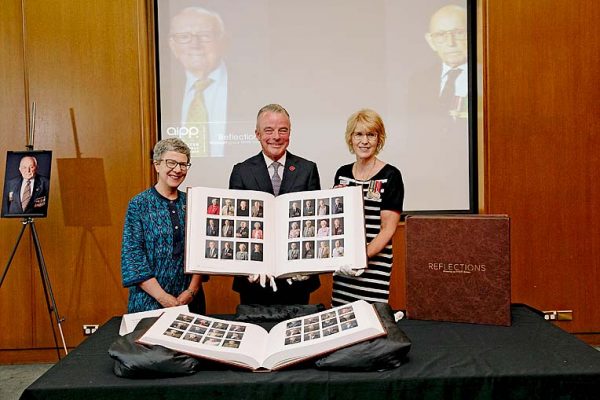
“There were some cases where I had organised a time to travel to a place and the veteran had unfortunately passed away just days before,” he said.
“There were several others who died a fortnight or a month after I had taken their picture.
“Everyone was elderly which we needed to take into consideration as the technical minimum age was 88.”
The accredited photographer said the three started to contact nursing homes which proved effective.
“I visited Boandik Crouch Street and was able to photograph eight people as the staff already knew the residents which had been involved in war service,” Mr Monger said.
“We also visited RSL families and staff were helpful and helped contact veterans in each district.
“In Warrnambool I set up my equipment and I had multiple people come in for a photograph as they knew I was there.”
Mr Monger said the veterans did not just consist of Australians.
“I took photographs of a couple of English servicemen and I know there were others in the group who took photographs of Germans, Russians and Italians who served their countries in the same conflict,” he said.
“The last person was somebody who was living 30km outside of Edenhope in a run-down, weatherboard house who had not had a shave for a week or a new shirt for around 12 years.
“Once you got into it and started to hear their stories I would have loved the opportunity to sit and record a lot more.”
Mr Monger praised AIIP on the project, which is among the biggest in its history.
“The book signifies a record of Australian involvement in World War II and recognises the scarifies made by thousands of people, many who never came home,” he said.
“It allows the restoration of history and if we did not do it then it would be totally lost.
“It was a privilege to be involved.”
The Reflections project resulted in a digital display of World War II veterans at the Australian War Memorial and the creation of a two-volume photographic book for the National Library of Australia.

